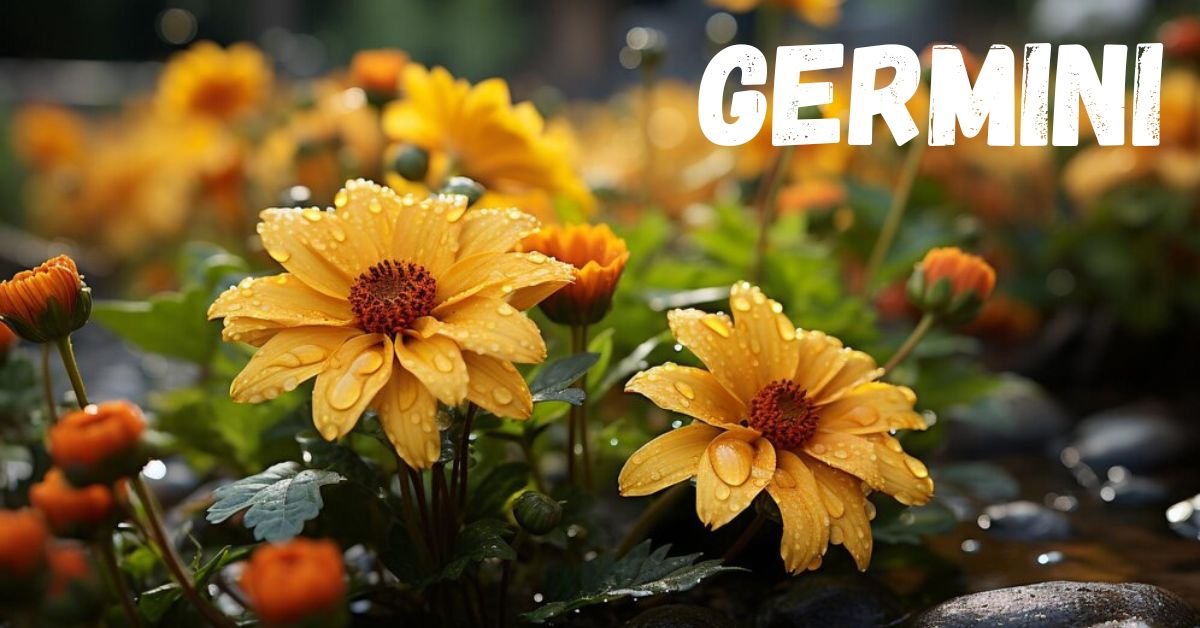Nature
Germini Care Guide: Tips for Growing and Enjoying Mini Gerberas

Germini, also known as mini Gerberas, are charming, vibrant flowers that have captivated gardeners and flower enthusiasts alike. Known for their smaller size and dazzling array of colors, Germini are popular for both garden planting and floral arrangements. Their compact form and lively hues make them a versatile choice for brightening up any space, whether indoors or outdoors.
History and Origin of Germini
The origins of Germini trace back to the larger Gerbera daisy, which is native to South Africa. Over time, breeders have developed these miniatures by selecting for smaller blooms and more compact growth habits. This evolution has resulted in the delightful Germini we know today, which combines the beauty of Gerberas with the convenience of a smaller plant.
Characteristics of Germini
Germini are characterized by their vibrant colors and sturdy stems. They typically range from 2 to 4 inches in diameter and come in a spectrum of colors, including bright reds, oranges, pinks, and yellows. Their petals are often arranged in a neat, circular pattern, creating a striking visual impact. These flowers are not only beautiful but also long-lasting, making them a favorite for bouquets and centerpieces.
Choosing the Right Germini
Selecting the right Germini for your garden or home involves looking for healthy, robust plants. When purchasing, check for strong stems, vibrant leaves, and no signs of pests or disease. There are many varieties available, each offering unique color combinations and bloom sizes. Consider your local climate and the specific conditions in your garden to choose the best varieties.
Planting Germini
Planting Germini successfully starts with choosing the right soil. These flowers thrive in well-draining, fertile soil with a slightly acidic to neutral pH. When planting, dig a hole that is twice the width of the root ball and just as deep. Place the plant in the hole, cover it with soil, and water thoroughly to help it establish.
Caring for Germini
Germini require regular watering, especially during dry spells. However, avoid overwatering, as this can lead to root rot. Fertilize your Germini every two weeks with a balanced, water-soluble fertilizer to encourage healthy growth and vibrant blooms. Pruning dead or faded flowers will promote new growth and extend the blooming period.
Pest and Disease Management
Germini are relatively hardy but can be affected by pests such as aphids, spider mites, and whiteflies. Regularly inspect your plants and treat any infestations promptly with insecticidal soap or neem oil. Diseases like powdery mildew and root rot can also occur, particularly in humid conditions. Ensure good air circulation around your plants and avoid overhead watering to minimize these risks.
Propagating Germini
You can propagate Germini through seeds, division, or cuttings. Seed propagation is the most common method but requires patience, as it can take several months for the plants to mature. Division involves separating a mature plant into smaller sections, each with its own roots, while cuttings involve rooting a section of the stem in water or soil.
Growing Germini Indoors
Growing Germini indoors is a great way to enjoy their beauty year-round. Choose a pot with good drainage and use a high-quality potting mix. Place your Germini in a bright spot with indirect sunlight, and maintain a consistent temperature around 65-75°F. Water when the top inch of soil feels dry, and feed with a balanced fertilizer every month.
Landscaping with Germini
Germini make excellent additions to garden beds and borders. Their compact size and bright colors can be used to create stunning displays. Consider planting them alongside complementary plants such as marigolds, petunias, or ornamental grasses. They also look great in containers, which can be moved around to add color wherever needed.
Seasonal Care for Germini
Germini care varies with the seasons. In spring and summer, focus on regular watering and feeding to support blooming. As fall approaches, reduce watering and prepare to protect your plants from frost by bringing potted plants indoors or covering garden plants with a frost cloth. In winter, keep indoor plants in a cool, bright location and water sparingly.
Harvesting and Using Germini Flowers
The best time to harvest Germini flowers is early in the morning, when they are fully open but not yet wilting. Cut the stems at an angle and place them in water immediately. These flowers are perfect for floral arrangements, centerpieces, and decorations. Their long vase life makes them ideal for bringing a touch of nature indoors.
Common Problems and Solutions
Germini can sometimes face issues such as yellowing leaves or a lack of blooms. Yellowing leaves may indicate overwatering or nutrient deficiencies. Adjust your watering schedule and consider adding a balanced fertilizer. If your Germini aren’t blooming, ensure they are receiving enough light and not too much nitrogen, which can promote foliage growth at the expense of flowers.
Conclusion
Germini, with their vibrant colors and compact size, are a delightful addition to any garden or home. By following proper planting and care techniques, you can enjoy their beauty throughout the growing season and beyond. Whether you’re a seasoned gardener or a beginner, Germini offer a rewarding experience with their cheerful blooms and easy maintenance.
FAQs
How often should I water my Germini?
Water your Germini when the top inch of soil feels dry. Avoid overwatering to prevent root rot.
Can I grow Germini from seeds?
Yes, Germini can be grown from seeds, though it requires patience as they take several months to mature.
What pests commonly affect Germini?
Common pests include aphids, spider mites, and whiteflies. Regular inspection and prompt treatment can keep these pests under control.
How do I propagate Germini by division?
Gently separate a mature plant into smaller sections, each with its own roots, and replant them in suitable soil.
What is the best location for growing Germini indoors?
Place Germini in a bright spot with indirect sunlight, maintaining a temperature of 65-75°F.

Nature
Skylea Nove: A Comprehensive Exploration

Skylea Nove might not be a name that rings a bell for many, but its significance and uniqueness are undeniable. This article delves into the intriguing world of Skylea Nove, shedding light on its characteristics, its role in the ecosystem, and its place in human culture. Whether you’re a nature enthusiast or simply curious, understanding Skylea Nove offers a fascinating glimpse into a lesser-known marvel of our world.
What is Skylea Nove?
Skylea Nove is a rare and distinctive species that has captivated the interest of scientists and enthusiasts alike. Originating from ancient times, Skylea Nove has evolved in ways that make it stand out among other species. Its name is derived from ancient languages, reflecting its long history and the mysteries surrounding it.
The Unique Features of Skylea Nove
One of the most captivating aspects of Skylea Nove is its physical characteristics. With vibrant colors and intricate patterns, it is a sight to behold. Its ability to adapt to various environments showcases its resilience and evolutionary success. These features not only make it unique but also essential for its survival in diverse habitats.
Skylea Nove in Popular Culture
Over the years, Skylea Nove has made its way into various forms of literature and media. Its mystique and beauty have inspired countless stories, artworks, and films. This cultural presence has helped raise awareness about its existence and the need to protect it.
The Habitat of Skylea Nove
Skylea Nove thrives in specific habitats that provide the resources it needs to survive. From dense forests to open plains, it has adapted to a range of environments. Understanding these habitats is crucial for conservation efforts and ensuring the species’ longevity.
The Lifecycle of Skylea Nove
The lifecycle of Skylea Nove is a journey of growth and transformation. From birth to adulthood, it undergoes several stages of development. Each stage is marked by unique behaviors and adaptations that prepare it for survival and reproduction.
Diet and Feeding Habits
Skylea Nove has a varied diet that changes depending on its environment and the availability of food. Its feeding habits are fascinating to observe, as they reflect its adaptability and the intricate balance it maintains with its ecosystem.
Interaction with Humans
Historically, Skylea Nove has had significant interactions with human populations. It has been revered in ancient cultures and continues to be of interest today. Modern interactions focus on conservation and understanding its role in our world.
Conservation Status
Currently, the conservation status of Skylea Nove is a matter of concern. Efforts are being made globally to protect its habitats and ensure its survival. These efforts are crucial as Skylea Nove faces threats from habitat loss and climate change.
Scientific Research on Skylea Nove
Scientific studies have provided invaluable insights into the biology and ecology of Skylea Nove. Researchers continue to explore its behaviors, genetics, and environmental interactions. Future research aims to uncover more about this enigmatic species.
Myths and Legends
Skylea Nove is steeped in myths and legends. Ancient folklore often depicted it as a mystical creature with special powers. These stories, while fictional, highlight the fascination and reverence that people have had for Skylea Nove throughout history.
Economic Importance
In some regions, Skylea Nove plays a significant role in the local economy. It attracts tourists and supports local businesses. Understanding its economic impact can help in formulating strategies for sustainable development and conservation.
Skylea Nove in Ecosystems
Skylea Nove holds an essential place in its ecosystem. It contributes to biodiversity and helps maintain ecological balance. Its presence affects other species and the environment, making its conservation crucial for overall ecosystem health.
Future Prospects
The future of Skylea Nove is shaped by various factors, including climate change and human activity. Predicting its future involves understanding these impacts and preparing to mitigate negative effects. Conservation efforts will play a significant role in determining its fate.
Conclusion
Skylea Nove is a remarkable species with a rich history and significant ecological importance. Understanding and protecting it is vital for maintaining biodiversity and ecological balance. As we learn more about Skylea Nove, we can better appreciate its role in our world and ensure its survival for future generations.
FAQs
What is Skylea Nove?
Skylea Nove is a rare species known for its unique physical characteristics and adaptability to various environments.
Where is Skylea Nove found?
Skylea Nove can be found in diverse habitats, ranging from dense forests to open plains, depending on the resources available.
How does Skylea Nove adapt to its environment?
Skylea Nove adapts through various physical and behavioral changes that allow it to survive and thrive in different habitats.
What is the conservation status of Skylea Nove?
The conservation status of Skylea Nove is currently concerning, with efforts underway to protect its habitats and ensure its survival.
Why is Skylea Nove important?
Skylea Nove is important for maintaining biodiversity and ecological balance. Its presence in ecosystems supports various other species and environmental health.
-

 Technology7 months ago
Technology7 months agoExploring the Concept of Assumira: Understanding Its Impact and Applications great 2
-

 TECH7 months ago
TECH7 months agoUnlocking the Power of Mystop: Your Ultimate Navigation Companion great 9
-

 BUSINESS7 months ago
BUSINESS7 months agoExploring the World of Kääntäjäö: Bridging Language Gaps great 7
-

 Blog7 months ago
Blog7 months agoThe Hidden Strengths: 거만한 크랭키/작다고 무시하면 안 돼요 Don’t Underestimate the Small and Cranky
-

 Technology6 months ago
Technology6 months agoChainiste: Exploring a Revolutionary Blockchain Platform
-

 HOME7 months ago
HOME7 months agoNTR Share House: Redefining Community Living great 8
-

 Technology7 months ago
Technology7 months agoQXEFV Demystified: How to Harness its Power for Maximum Impact great 8
-

 Blog7 months ago
Blog7 months agoExploring the World of HD Hole